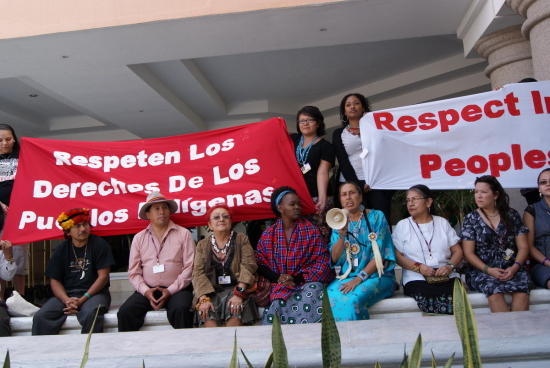The proposed implementation of a United Nations-supported carbon storage program (REDD) in the southern Mexican state of Chiapas is provoking plenty of controversy. The debate is hotting up because a follow-up program called REDD+ is due to start in 2012. A good summary of the situation is provided by REDD rag to indigenous forest dwellers.
What is REDD?
- REDD stands for Reducing Emissions from Deforestation and Forest Degradation
- It is a carbon storage program, started in 2008 by the Food and Agriculture Organization (FAO), the U.N. Development Programme (UNDP) and the U.N. Environment Programme (UNEP).
- It aims to conserve biodiversity and boost carbon storage by preventing deforestation and by replanting forests
- It is focused on developing countries, and provides them wih funds and technical support
At first glance, it would seem like a good fit for Chiapas, one of Mexico’s poorest states, where a high proportion of the population are reliant on subsistence farming. The Chiapas state government backs REDD, considering it as one way of helping mitigate the likely consequences of climate change in the state. Chiapas’ total emissions of carbon dioxide amount to 32 million metric tons/year, about 4.5% of the national figure. The Chiapas contribution comes mainly from deforestation and farming.
NGOs working in Chiapas warn that REDD poses a serious threat to indigenous people. About 20% of the 4.8 million people living in Chiapas belong to one or other of the state’s numerous indigenous groups. Land tenure in many parts of Chiapas is hotly disputed; this was one of the reasons for the EZLN (Zapatista Army of National Liberation) uprising in 1994.
Miguel García, a spokesperson for an NGO founded in 1991 which supports indigenous groups and protects the environment, has been quoted as saying that REDD “will alter indigenous culture, will commodify it, giving commercial value to common assets like oxygen, water and biodiversity.” He is especially concerned that “resentment of and confrontation with the Zapatista grassroots supporters are being accentuated.”
As with so many geographic issues, there is no easy “right answer” here. The rights of indigenous groups need to be respected and their views taken into account, before any decision is made about the value of their forest home to global efforts to mitigate climate change.
This is one controversy we plan to follow as it plays out in coming months.
Want to read more?
Related posts:
One Response to “Chiapas: carbon capture program or indigenous people?”
Sorry, the comment form is closed at this time.

And what are the indigenous to do once all the forests have been harvested, and the land ground into dust from chemical agents that can’t be sold in the US and Europe? Should desertification be encouraged? Is that a wise policy for the people of Chiapas?